| The plants we have passed as we were driving across the desert
areas of America have usually seemed scrubby and unattractive, but the
plantings in the Desert Botanical Garden display an unexpected beauty.
Plants that survive in desert conditions are not just cacti, but succulents,
trees and flowers as well, and they come from all over the world. Deserts
occur at all altitudes so their plants need different adaptations for each
environments. | 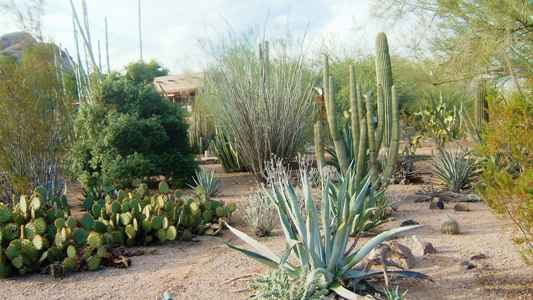 |
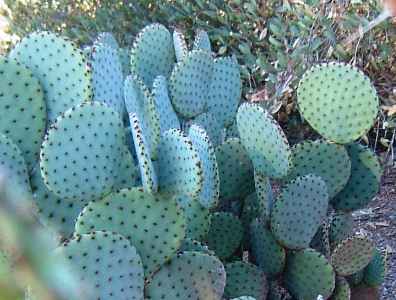 | . |
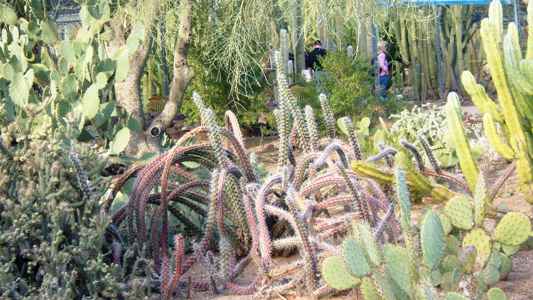 |
Cacti are sometimes seen as the ugliest of these, but they come in so many
unusual shapes and shades of green that even they have a beauty of their
own, although they have a certain vicious aspect. These four are very
different, and also have wonderfully descriptive names. The pads of the
polka dot prickly pear (above left) are nearly perfect circles and look
relatively harmless, but the regular dots are formed by groups of tiny
hair-like spines which break easily and leave irritating points in the
victim's skin. The octopus cactus (above right) has a very descriptive name
and more obviously dangerous spines. 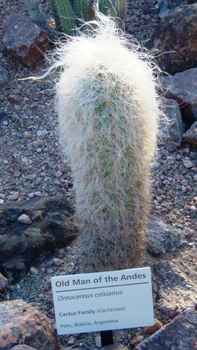 |
The Old Man of the Andes (left) hides its spines in a mass of wispy
hair. And I'd love to know who named the Green Strawberry Hedgehog
(right).. | 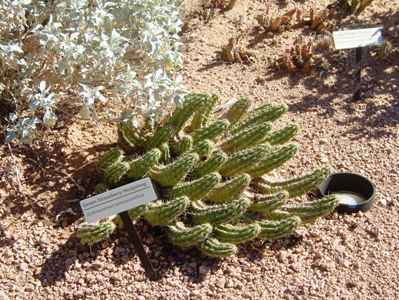 |
| The totem pole cactus, another nicely descriptive name, can grow
to over 9ft tall. | 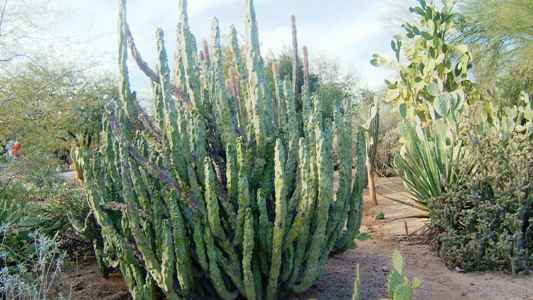 |
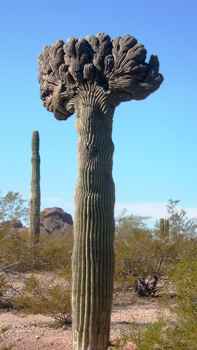 | These 2
cacti show that cacti too can have health problems. A virus has caused some
growing points to over-produce tissue. | 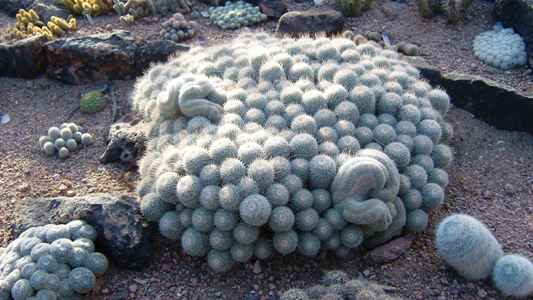 |
I used to think that the bright pink little flowers on cacti at the garden
centre were artificial, pinned on to encourage people to buy. But now I have
seen them like this in the wild so I know better. This was not the best time
of year to see flowers, but many of the cacti were still bearing their
fruits, which can also vary widely in colour and form. If you look carefully
you can see that the barrel cactus on the right also has some particularly
vicious 'fish hook' spines.| The mature soap root yucca reminds
me rather of a camel. Another descriptive name, this time of one of its
uses - the roots were pounded in water to produce a soap-like substance
which native peoples used for cleaning. | 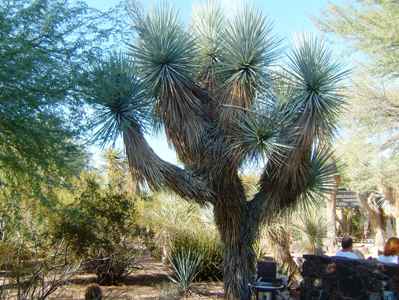 |
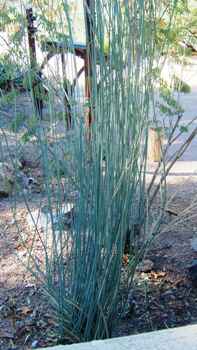 | Desert
milkweed (left) produces a white sap with a number of uses. Sotol (right)
has an edible heart, the long leaves are used for weaving baskets and mats,
and the woody flowering stem can be used in building huts. | 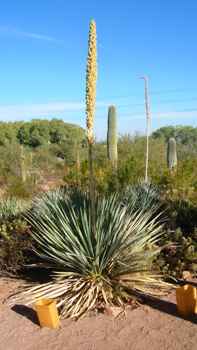 |
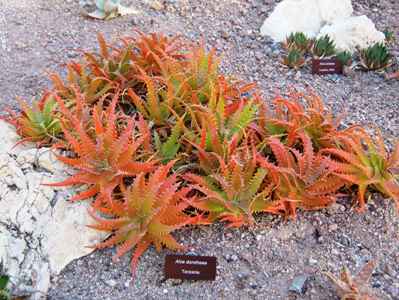 | Two
very different forms of aloe. The red one grows to about 6 inches and is
very decorative. The tree on the right is also an aloe but has grown to
about 10ft high. They are both close relatives of the aloe vera that is
widely used in cosmetics and medicines. | 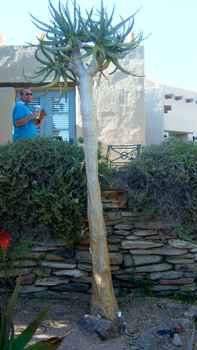 |
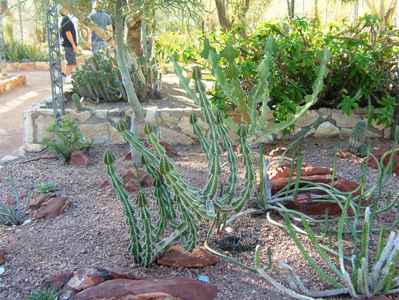 | Euphorbias are familiar plants in English gardens, but don't look
much like the ones in this group, which come from Africa. |
| An
important part of the botanical garden's purpose is education about how
desert plants have been used in the past and how they can be used in the
future. Cacti often have edible bodies and fruits (once the spines have been
removed), and many plants produce edible, medicinal and building materials. This
is a native round house constructed entirely from plant materials. Even the
rope used to tie everything together is made from the leaf fibres of plants
such as the agave. | 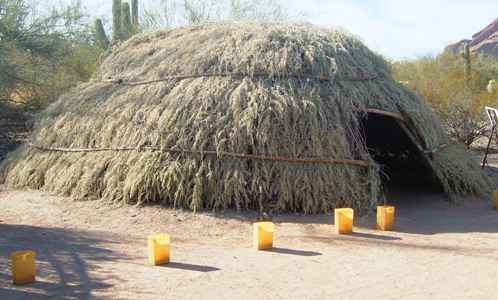 |
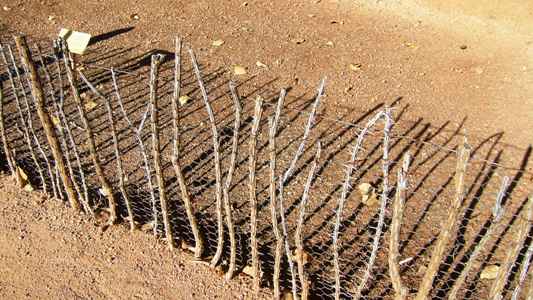 | The
fence is built of stems from the ocotillo, whose spines project in all
directions. Ocotillo stems often root themselves after rainfall, thus
producing a really prickly hedge. |
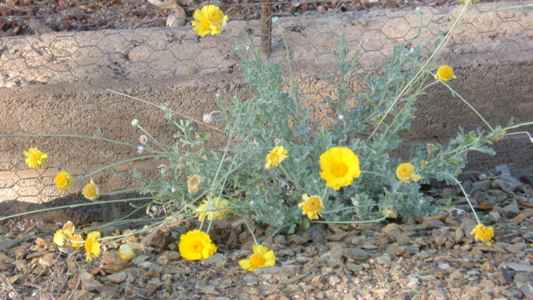 | . | 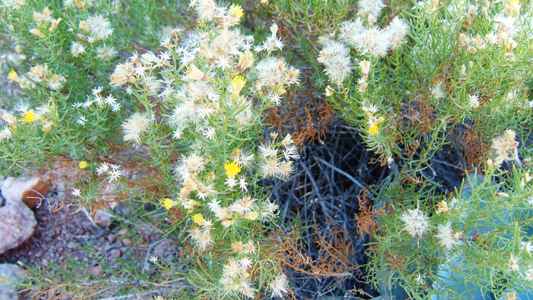 |
| Some examples of the beautiful flowering plants the desert can
produce: yellow desert marigold, the fluffy white seed heads of the
turpentine bush, and red fairy duster. | 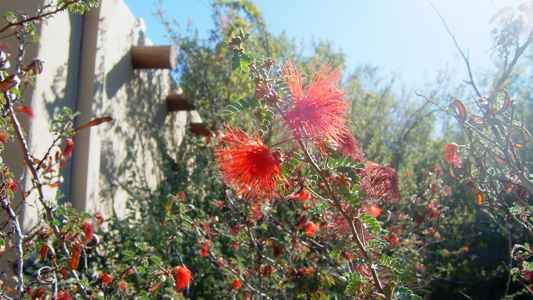 |
|